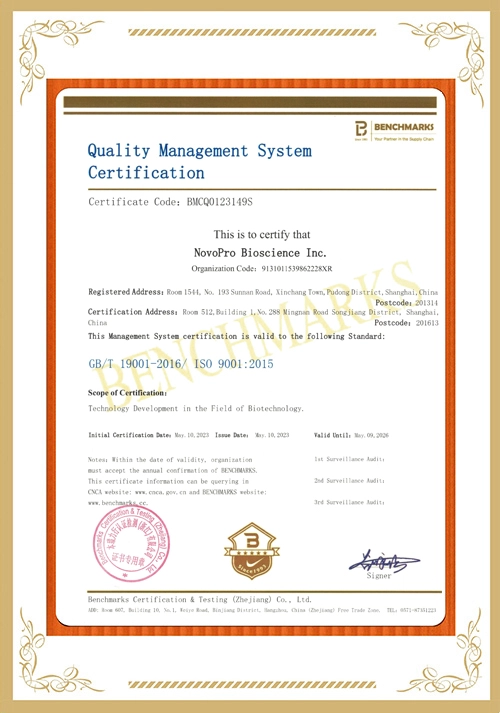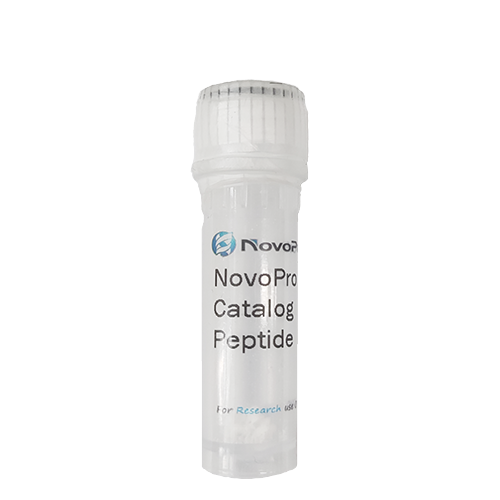α-CGRP (human) peptide
Not For Human Use, Lab Use Only.
Cat.#: 318964
Special Price 468.00 USD
-
Product Name
α-CGRP (human) peptide
-
Documents
Batch to batch variation of the purity
-
Sequence Shortening
H-ACDTATCVTHRLAGLLSRSGGVVKNNFVPTNVGSKAF-NH2
-
Sequence
H-Ala-Cys-Asp-Thr-Ala-Thr-Cys-Val-Thr-His-Arg-Leu-Ala-Gly-Leu-Leu-Ser-Arg-Ser-Gly-Gly-Val-Val-Lys-Asn-Asn-Phe-Val-Pro-Thr-Asn-Val-Gly-Ser-Lys-Ala-Phe-NH2
-
Length (aa)
37
-
Peptide Purity (HPLC)
95.19%
-
Molecular Formula
C163H267N51O49S2
-
Molecular Weight
3789.29
-
Source
Synthetic
-
Form
Powder
-
Description
α-Calcitonin gene related peptide (human) is a potent, long-lasting vasodilator which possesses protective mechanisms for physiological and pathological conditions involving the cardiovascular system and wound healing. CGRP is primarily released from sensory nerves and can function in the transmission of nociception. α-Calcitonin gene related peptide (human) acts as an appetite suppressant and contributes to gastric acid secretion.
-
Storage Guidelines
Normally, this peptide will be delivered in lyophilized form and should be stored in a freezer at or below -20 °C. For more details, please refer to the manual: Handling and Storage of Synthetic Peptides
-
References
- Brain et al (1985) Calcitonin gene-related peptide is a potent vasodilator. Nature 313 54 PMID: 3917554
- Poyner et al (2002) International union of pharmacology XXXII. The mammalian calcitonin gene-related peptides, adrenomedullin, amylin, and calcitonin receptors. Pharmacol.Revs. 54 233 PMID: 12037140
- Russell et al (2014) Calcitonin gene-related peptide: physiology and pathophysiology. Physiol Rev. 94(4) 1099 PMID: 25287861
-
About TFA salt
Trifluoroacetic acid (TFA) is a common counterion from the purification process using High-Performance Liquid Chromatography (HPLC). The presence of TFA can affect the peptide's net weight, appearance, and solubility.
Impact on Net Weight: The TFA salt contributes to the total mass of the product. In most cases, the peptide content constitutes >80% of the total weight, with TFA accounting for the remainder.
Solubility: TFA salts generally enhance the solubility of peptides in aqueous solutions.
In Biological Assays: For most standard in vitro assays, the residual TFA levels do not cause interference. However, for highly sensitive cellular or biochemical studies, please be aware of its presence.
-
Molar Concentration Calculator
-
Dilution Calculator
-
Percent Concentration Calculator
Mass (g) = Concentration (mol/L) × Volume (L) × Molecular Weight (g/mol)
Related Products / Services
• Peptide Services: NovoPro's peptide synthesis services include standard chemical peptide synthesis, peptide modification, peptide libraries, and recombinant peptide expression.
• Standard Peptide Synthesis: NovoPro offers quality peptides at the most competitive prices in the industry, starting at $3.20 per amino acid. NovoPro provides PepBox – Automatic Quote Tool for online price calculation.
• Peptide Modifications: NovoPro offers a wide range of peptide modification services including isotope labeling (2H, 15N, and 13C), multiple disulfide bonds, multiple phosphorylations, KLH, BSA, ovalbumin, amidation, acetylation, biotin, FITC, etc.
Please note: All products are "FOR RESEARCH USE ONLY AND ARE NOT INTENDED FOR DIAGNOSTIC OR THERAPEUTIC USE"

